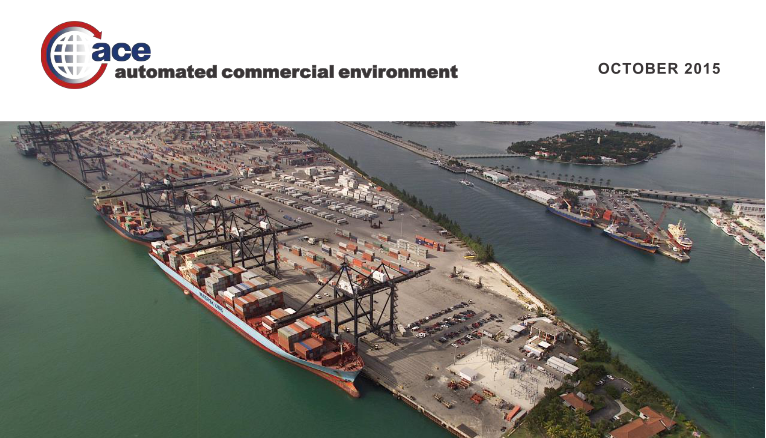By October 2016 Customs and Border Protection (CBP) hopes to fully implement the Automated Commercial Environment (ACE) reporting system. Read the content below and learn about the purpose behind this innovative technology and important dates.
In accordance with the Customs Modernization Act of 1993, CBP has begun implementing ACE, which will become the primary reporting system for the trade community. Via ACE, companies will be able to submit import and export data with a paperless process. CBP aims to make all current manual processes standardized and automated through ACE, allowing businesses to comply with U.S. laws and regulations more efficiently.
The Single Window Approach
The ACE implementation will create a “Single Window” approach for the trade community which will allow pertinent information to be sent to Customs and other agencies more effectively. The old reporting systems, ACS and AES, will be replaced by ACE, a system compatible with all 47 agencies that are regularly involved in international trade. Currently, there are nearly 200 forms associated with these agencies and ACE will allow all of these documents to be filed in one channel. This ensures businesses will spend less time filing paperwork, such as ISF Data and Entry Summaries, and give them more time to focus on their supply chain.
Implementation Dates to Remember:
- November 1, 2015 – ACE filing of 01, 11, 03, 51, and 52 summary types without PGA data will be accepted.
- February 28, 2016 – Customs will no longer accept ACS filing for FDA, NHTSA, and APHIS data.
- July 2016 – Filers will only be permitted to use ACE for the following agencies: AMS, APHIS Core, ATF, CDC, DCMA, DDTC, DEA, E&C, EPA, FSIS, FWS, NFMS, and TTB. In addition, hybrid submissions, those filed through a combination of paper and electronic data, will no longer be accepted.
- October 1, 2016 – ACE must be used for all remaining electronic portions of the CBP cargo process.
More about ACE, here.







![[Webinar] How Could Changes to De Minimis Impact Your Company?](https://traderiskguaranty.com/trgpeak/wp-content/uploads/2025/05/trg-how-de-minimis-impacts-customs-bond-webinar-400x250.png)